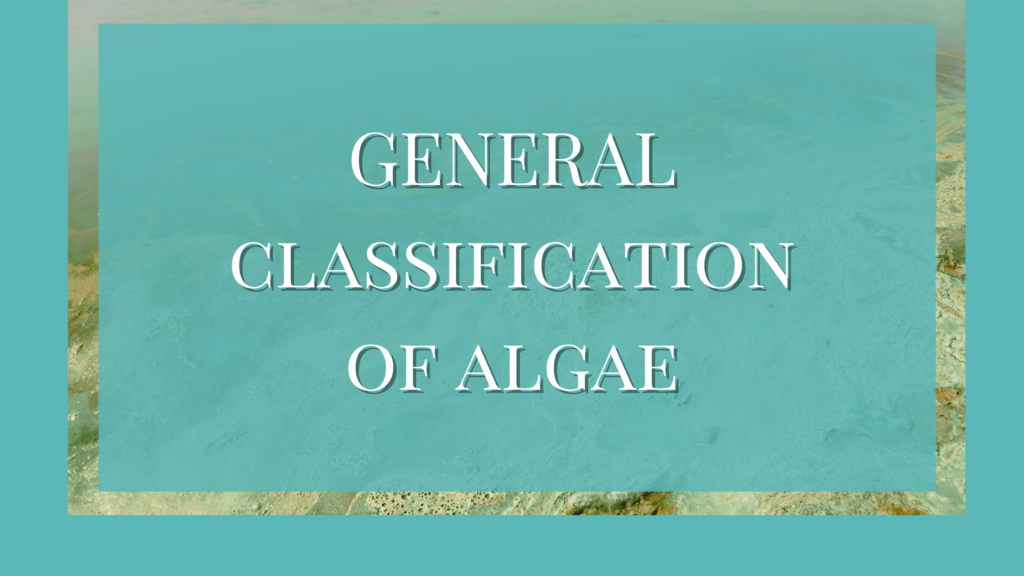The range of thallus organization in algae is much wider.
The algal body is not differentiated into root, stem, and leaf. It simply has a thallus structure. Instead of the differentiated parts, they have a simple structure that may be unicellular or multicellular. Each of these types of thallus organization in algae is further categorized according to the characteristics of algae and their adaptations.
Unicellular thallus organization in algae
These are single-cell algae that are either motile or non-motile. These algae exist as a single organism or combine to form a single unit. Here are the different types of unicellular algae.
Motile
The motile algae will have a flagellum or a rhizopidium attached to its body.
Rhizopodial
These algae lack a proper cell wall and flagellum. To help with their locomotion, there will be cytoplasmic projections in the form of rhizopodia or pseudopodia. They show amoeboid movements. Examples are Chrysamoeba from Chrysophyceae.
Flagellated type
Almost all groups of algae have unicellular flagellated organisms except for Bacillariophyceae, Myxophyceae, Phaeophyceae, and Rhodophyceae. Such algae have a round, oblong, or pear-shaped body. The number of flagella in algae differs from one group to another. It can be one, two, or four, equal or unequal. Examples are Euglena, Chlamydomonas, Chlorogonium, Cryptomonas, and Heterochloris.
Non-motile
As the name suggests, these algae have no locomotive organs or parts. They exist in two forms.
- Coccoid forms with a small spherical body with no flagella. Some can be a little elongated with slightly differentiated basal and apex structures. They can exist as a single organism or form groups with others. This type of algae is seen in most groups. Examples are, Chamaesiphon, Characiopsis, Chlorococcum, Chlorella, Gloeocapsa, and Porphyridium.
- Spiral form of algae is seen in Spirogyra. They have a filamentous spiral body.

Multicellular thallus organization in algae
Algae having multicellular plant bodies or aggregated algae are categorized in this group. They are further classified into colonial, filamentous, siphonous, and parenchymatous.
Colonial
These are unicellular algae but exist as a group or colony. They can be loosely packed or form an aggregated colony.
Coenobial algae
Such algae are divided into motile and non-motile depending upon the presence or absence of flagella.
- Motile: Members of this group of coenobial algae will have a flagellum and they form groups having a specific number of members. These members are connected in a gelatinous matrix. They form a spherical shape with the outermost row of algae having their flagella protruding outwards. This structure is called coenobium. Examples are Ceratium, Chlorodesmuus, Eudorina, Gonyaulax, Pandrina, and Volvox.
- Non-motile algae have no flagella and are attached from end to end of their bodies or through the long axis. They exist as single layers in the shape of a pentagon, hexagon, or star-shaped. An example is Hydrodictyon which forms pentagon or hexagon shapes. Other examples are Coelastrum, Pediastrum, and Scenedesmus from Chlorophyceae.
Aggregated
Aggregated algae form irregular shapes and appear in various sizes as well. Depending upon the shape they make, they are further classified into three.
- Palmelloid: It is a temporary stage formed under unfavorable conditions. In such conditions, the parent body produces daughter cells that are still attached. All these cells will be embedded in a gelatinous mixture produced by the parent cell. There may also be numerous other cells formed by the daughter cells. But they all stick together as a unit until they all develop flagella. It is commonly seen in Aphanothece, Chlamydomonas, and Chromulina.
- Dendroid means branching or tree-shaped. This type of algae attaches only to their basal body. The gelatinous matrix is still produced but only at the base of the plant body. Each cell attaches to the other only at its ends. Due to this, such thallus organization in algae has a structure similar to a small benched plant or tree. Examples are Ecballocystis and Prasinocladus.
- Rhizopodial colony is formed when the algal cells are attached through their rhizopodia. An example is Chrysidiastrum.
Filamentous
This type of thallus organization in algae is seen with a filamentous body. The multiple cells are attached in rows and may look like a thread. The filamentous structure is a result of repeated cell division in the same direction and plane. The cells in such thalli may be arranged in single or multiple rows. These algae may be branched or unbranched.
Unbranched
Unbranched type of thallus organization in algae is seen in only a few algal groups. This type is further divided as,
- Free-floating as in the case of Spirogyra.
- Attached to the substratum such as Oedogonium
- Colonial unbranched as in the case of Nostoc.
Such unbranched filaments are mostly seen in Ulothrix, Spirogyra, Nematochrysis, Tribonema, etc.
Branched
The branched filamentous type of thallus organization in algae is further classified based on their thallus structure, shape, and growth or division behavior.
- Falsely branched thallus arises as a result of fragmentation often due to degeneration of the intercalary cell. It can also occur due to the formation of a separation disc in the form of a biconcave. As a result, one or either side of the damaged cell grows out to form a branch. It creates a false-branched appearance. Eg. Scytonema
- Truly branched structures have well-developed proper branches that are connected. They are further classified as
- Simple truly branched algae that have the thallus attached to a substratum with the help of a basal cell. The filamentous structure arises from this cell and is further divided into multiple cells, attached one after the other. Eg. Cladophora.
- Heterotrichous truly branched algae has a well-developed branched filament that grows both a prostrate structure and erect structures.
- Pseudoparenchymatous has a few filaments from the central or axial positions fused to give the appearance of a parenchymatous structure.
- Uniaxial form has a single main axis with multiple side branches. Eg. Batrachospermum, Polysiphonia, and Spermatochunus.
- Multiaxial forms have multiple axises such as central and lateral, and they form a cortex. Eg. Chondrus and Scinaia.
Siphonous
The siphonous type of thallus organization in algae has a tube-like but hollow structure called a coenocyte. This multi-nucleated filament grows without a cross wall. But it will have a vacuole, chloroplasts, and nuclei which will be located close to the peripheral part of the cytoplasm. Eg. Botrydium and Vaucheria.
Parenchymatous
The parenchymatous thallus organization in algae is a modified version of the previously discussed filamentous form. Here the cells of the filament divide into multiple planes to give rise to a branched form. Examples of such forms are Ulva (foliose), Enteromorpha (tubular), and Chara (highly developed). Other examples of highly developed siphonous algae include Fucus and Laminaria.
Additional Reading
- Classification of Algae
- Different Types of Algae Classification
- General Characteristics Of Algae
- Occurrence and Habitat Of Algae




